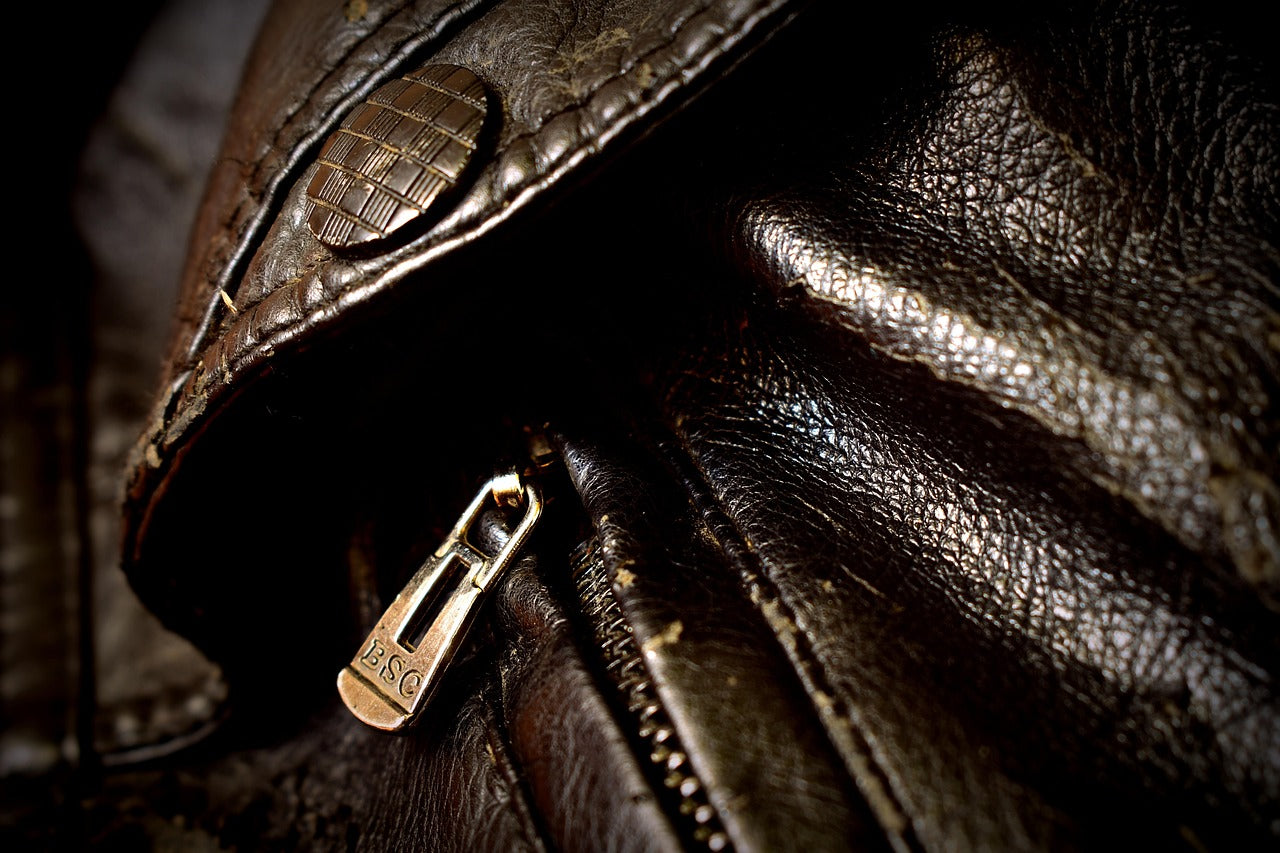Leather painting is more than just an art form; it's a fusion of tradition, culture, and creativity. From custom footwear to hand-crafted wallets, painted leather pieces serve as unique expressions of personal style and cultural heritage. One of the most captivating ways to transform leather is by incorporating traditional-inspired designs that carry deep historical and aesthetic significance. Whether it's intricate floral motifs from Eastern cultures, bold geometric Native American patterns, or the rich hues of African tribal art, these cultural leather patterns offer a fresh take on hand-painted leather that resonates with modern sensibilities.
Crafting art on leather demands precision, patience, and the right tools. However, when done correctly, it results in durable, visually striking pieces that can last for years. This guide dives into every aspect of painting leather, specifically focusing on traditional leather art, ensuring a blend of cultural appreciation and technical mastery.
Essential Materials and Tools
Types of Leather Suitable for Painting
Not all leather types are equal when it comes to painting. Full-grain leather is often preferred due to its durability and natural surface, while top-grain leather also works well after proper preparation. Avoid heavily treated or coated leathers like patent leather, as their glossy finish can repel paint. Suede and nubuck are not ideal for painting but are more suited to dyeing.
Recommended Paints
-
Acrylic Paints: The most commonly used paint for leather due to its flexibility and quick drying time. leather paints are particularly popular among hobbyists and professionals alike, offering a wide range of colors and finishes like matte, satin, and gloss.
-
Oil-Based Paints: Known for their rich pigmentation and natural sheen, oil-based paints provide long-lasting results but have a longer drying time.
-
Enamel Paints: These are great for achieving a smooth, glossy finish with fewer coats. They are user-friendly and highly durable, ideal for beginners.
Brushes, Stencils, and Other Tools
-
Brushes: Use synthetic fiber brushes for even application and easy cleaning. Fine-tipped brushes are essential for detail work, while wider brushes are better for large areas.
-
Stencils: Ideal for cultural leather patterns like mandalas, tribal motifs, or floral designs. Stencils can be store-bought or custom-made using tools like Cricut.
-
Other Tools: Leather deglazer, rubbing alcohol, conditioner, transfer paper, painter's tape, and a sealant for finishing. An airbrush can be used for large or gradient designs.
Preparing the Leather
Cleaning and Deglazing
Before painting, thoroughly clean the leather using a leather cleaner or rubbing alcohol to remove dirt, oils, and any factory finish. Follow up with a leather deglazer to strip off existing finishes, ensuring the paint adheres properly.
Conditioning Leather
Conditioning the leather with an oil-based conditioner keeps it supple and prevents cracking. Allow the conditioner to fully absorb and dry before painting. This step is crucial for ensuring long-lasting, flexible paint application.
Testing Paint on a Small Patch
Always test your paint on an inconspicuous area to check for color accuracy, adherence, and finish. This step helps avoid surprises and allows for any adjustments before committing to the full design.
Design and Planning
Choosing a Traditional Design
When selecting traditional-inspired designs, consider the cultural significance and aesthetics. Japanese wave patterns, Native American geometric motifs, Indian paisley designs, and African tribal patterns all offer rich visual appeal. Ensure respectful use by researching the origins and meanings behind each design.
Sketching and Transferring the Design
Sketch your design on paper first to plan layout and color schemes. Transfer the design using transfer paper or draw lightly with a leather-safe marker. Stencils are especially useful for complex, symmetrical designs.
Using Stencils for Intricate Patterns
Stencils help replicate detailed patterns accurately. Secure them with painter's tape and use light brush strokes or airbrushing to avoid paint bleeding. Reposition carefully to maintain symmetry and flow in the design.
Painting Techniques
Step-by-Step Guide to Applying Paint
-
Base Layer: Start with a thin base layer using your lightest color.
-
Detail Work: Once dry, add layers for detailing. Work from light to dark shades for better coverage and correction.
-
Dry Time: Allow each layer to dry fully (10-15 minutes for acrylic, longer for oil-based paints).
Tips for Layering and Blending Colors
-
Layer thin coats to prevent cracking.
-
For blending, work wet-on-wet with a dry brush or sponge for smooth transitions.
-
Mix colors beforehand to ensure consistency, especially for larger projects.
Techniques for Creating Texture and Depth
-
Use stippling brushes or sponges for textured effects.
-
Dry brushing adds highlights and dimension.
-
Experiment with gradients for a dynamic, realistic look.
Sealing and Finishing Leather Paint Projects
Different Sealants and When to Use Them
Choosing the right sealant is crucial for both the appearance and durability of your painted leather project. Sealants not only protect the paint from wear and environmental damage but also influence the final aesthetic of the leather surface. There are several finish types to consider, each with its own unique benefits:
-
Matte Finish: Ideal for achieving a natural, understated look, a matte finish offers minimal shine and helps maintain the original texture of the leather. It’s perfect for projects where subtlety is preferred or when the painted design is intricate and doesn't need a reflective surface.
-
Gloss Finish: If you want your colors to pop and the surface to have a reflective, polished look, a gloss finish is your best choice. This type of finish enhances the vibrancy of the paint and provides a high-shine, almost glass-like appearance, making it popular for fashion-forward leather items.
-
Satin Finish: Falling between matte and gloss, a satin finish offers a soft sheen without the high reflectivity of gloss. It strikes a balance that works well for most applications, giving the leather a professional and clean finish while still allowing the colors to remain vibrant.
When selecting a sealant, always opt for products specifically designed for leather. Acrylic-based sealants are generally recommended because they offer both flexibility and durability, which are essential to prevent cracking and peeling over time. To apply, use a clean brush or sponge, ensuring thin, even coats. This helps avoid streaking or the formation of bubbles, which can detract from the final look.
Techniques for Applying Sealants
Proper application techniques can significantly impact the longevity and appearance of your sealant layer. Follow these steps for optimal results:
-
Allow Paint to Cure: After completing your painting, let the leather sit undisturbed for at least 24 hours. This curing period ensures that the paint has fully adhered and dried, reducing the risk of smudging or damage when sealant is applied.
-
Apply Thin Coats: Instead of a single thick coat, apply 1-2 thin layers of sealant. Let each layer dry completely before adding the next. This approach minimizes the chance of bubbles and promotes an even, smooth finish.
-
Flex the Leather Between Coats: Gently flex the leather item after each coat has dried to help maintain its flexibility. This simple step can prevent future cracking, especially on items that will undergo frequent bending or movement.
Maintenance Tips
Caring for Painted Leather
Maintaining your painted leather items ensures their longevity and keeps them looking vibrant. Regular care involves:
-
Cleaning: Use a soft, damp cloth to gently wipe down the leather surface. Avoid using harsh chemicals or abrasive cleaners, as these can damage both the paint and the sealant.
-
Conditioning: Periodically apply a leather conditioner to keep the leather supple and prevent it from drying out. Be sure to use a conditioner that’s safe for painted leather, and avoid over-applying.
-
Storage: Store leather items in a cool, dry place, away from direct sunlight or heat sources. UV exposure can cause fading and deterioration over time.
Handling and Storing Painted Leather Items
To further protect your painted leather pieces:
-
Avoid Folding: Do not fold or crease areas that have been painted, as this can cause the paint to crack or peel.
-
Use Dust Bags: When not in use, place leather items in dust bags to protect them from dust, moisture, and accidental scuffing.
-
Keep Away from Abrasive Surfaces: Contact with rough or sharp surfaces can chip or scratch the paint. Handle items with care, especially when transporting or storing them.
Common Mistakes and Troubleshooting
How to Fix Common Painting Errors
Mistakes can happen, but many are easily fixable:
-
Smudges: If the paint is smudged, lightly sand the affected area with fine-grit sandpaper, then repaint and allow it to dry thoroughly before resealing.
-
Color Bleeds: When colors bleed into one another unintentionally, cover the area with a darker shade or use a fine detail brush to correct and sharpen lines.
-
Cracks: Cracking often results from inflexible paint or thick layers. Sand the cracked area lightly and reapply a flexible paint in thin, even coats, allowing each to dry before applying the next.
Adjusting Techniques for Different Leather Types
Different types of leather require tailored approaches:
-
Smooth Leather: This type requires proper deglazing to remove existing finishes before painting. Ensure thorough sealing afterward to protect the smooth surface.
-
Softer Leather: Soft or more pliable leathers need extra care. Use highly flexible paints and avoid heavy layering to maintain the leather’s natural flexibility.
Before sealing the entire item, it’s advisable to test different sealants on a small, inconspicuous area. This helps ensure that the finish achieves the desired look and durability for your specific leather type.
(Source: @jeweleeches)
Painting leather with traditional-inspired designs is a meaningful way to celebrate cultural artistry while personalizing your accessories. From mastering paint techniques to choosing culturally significant patterns, each step brings you closer to creating a unique, hand-painted leather masterpiece. With the right tools, patience, and creativity, your work can reflect the rich tapestry of global traditions.
For hobbyists and professionals seeking premium leather paints, sealants, and preparation tools, Angelus Direct offers a comprehensive range tailored for exceptional results in leather art.
FAQs
How long does leather paint last?
When properly applied and sealed, leather paint can last for years. Durability depends on usage, environmental exposure, and maintenance. Sealing is crucial to extend the paint's lifespan.
Can you wash painted leather?
It’s best to avoid immersing painted leather in water. Spot clean with a damp cloth. Harsh chemicals and machine washing can damage the paint and leather.
What are the best paints for a beginner?
Acrylic paints designed for leather are ideal for beginners due to their ease of use, flexibility, and quick drying time. Angelus Direct’s acrylic paints are highly regarded for consistent results and color range.
How do you fix a painting mistake on leather?
Let the paint dry, sand the mistake lightly, and repaint. For minor corrections, use a fine brush with the matching color. Seal the corrected area to ensure durability.
Tips for mixing custom paint colors?
Start with a base color and add small amounts of secondary colors. Mix thoroughly and test on scrap leather. Note ratios for consistency in larger projects.

